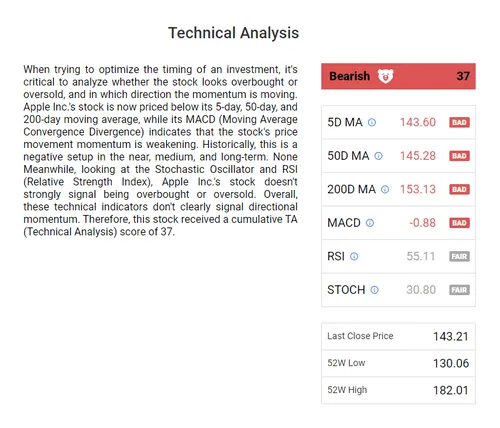20 Recommended Ideas For Picking Ai For Investing Websites
20 Recommended Ideas For Picking Ai For Investing Websites
Blog Article
Top 10 Suggestions To Determine The Integration And Compatibility Of Ai-Based Stock Predicting/Analyzing Trading Platforms
AI stock prediction and analysis platforms should be compatible and integrate seamlessly with existing tools, systems and workflows. Platforms that seamlessly integrate with existing tools, workflows, and systems can enhance efficiency and productivity. Here are the top 10 suggestions for evaluating the compatibility and integration of these platforms:
1. Check Brokerage Integration
Supported brokers: Ensure that the platform is compatible with your preferred brokerage account or trading account.
Trade execution: Determine if the platform supports direct trade execution via the integrated broker.
Account synchronization: Check that the platform can connect in real time to your accounts, balances and positions as well as transaction history.
2. Check the availability of APIs
API access is important: Developers can use an API, also known as Application Programming Interface (API) to create their own software and automate their processes.
API documentation - Verify that API's examples and usage scenarios are well documented.
Rate limits: Determine whether the API has reasonable rate limits and can accommodate your expected amount of usage.
3. Check Third-Party Tool Integrity
Popular tools: Find out whether the platform is compatible with tools like Excel, Google Sheets, or trading bots.
Data export/import. Check that your platform can import or export data from/to any other tool.
Plugins/extensions Verify the platform's support for extensions as well as plugins to provide additional functionality.
4. Test Compatibility Operating Systems
Desktop compatibility. Make sure the operating system you prefer (Windows, macOS, Linux) are supported.
Mobile compatibility: Check if there is a mobile app for iOS or Android.
Web-based accessibility: To increase flexibility, make sure that the interface of the platform can be accessed through an internet browser.
5. Evaluation of Data Integration Capabilities
Data sources: Ensure that the platform integrates with a variety of data sources (e.g. market data sources or news feeds).
Real-time data feeds: Check if the platform supports real-time data integration to provide the most current analysis.
Verify the platform's capability to import historical data.
6. Evaluation of cloud and on-premise compatibility
Cloud-based platforms: Make sure the platform is accessible from anywhere that has an internet connection.
On-premise solutions. If you are interested in on-premise deployments make sure your platform supports it.
Hybrid alternatives: Find out whether the platform has a hybrid model combining cloud and on-premise capabilities.
7. Make sure that you have Cross-Platform Synchronization enabled.
Device synchronization. Check that the platform is synchronized to transfer settings and data between the devices (desktops/laptops/mobiles/tablets).
Make sure that any changes made to one device reflect on the other devices.
Offline Access: Make sure to determine if there are any restrictions on the platform's functionality or data access if it is offline.
8. Analyzing the compatibility of trading strategies
Algorithmic trading: Ensure the platform is compatible with algorithmic or automated trading strategies.
Custom indicators: Find out whether you are allowed to make use of customized indicators or scripts.
Backtesting strategies. Check whether the platform supports backtesting strategies based on historical data.
9. Assess Security and Compliance
Data encryption - Make sure that your platform uses encryption for all your data, at all times, including when it's in storage.
Authentication: Check whether the platform supports secure authentication methods (e.g., two-factor authentication).
Regulative compliance - Determine if the platform complies relevant regulations, e.g. GDPR. FINRA. SEC.
10. Test Scalability and Performance
Scalability - Make sure that the platform you choose can meet your ever-growing requirements in terms of data and data.
Performance during load: Determine whether the platform is responsive under high-volatility conditions.
Utilization of resources: Determine whether the platform is using the resources of the system (CPU memory, bandwidth, CPU).
Bonus Tips
User feedback: Study user reviews and testimonials to gauge the integration capabilities of the platform.
Trial period: Test the platform for free, or download a demo and check out how it works with your existing tools and workflows.
Customer support: Make sure that the platform offers a robust customer service to address issues related to integration.
Follow these tips to assess the integration and compatibility between AI platforms for predicting and analyzing stocks as well as your existing trading systems, and ensure that they increase the efficiency of your trading. Check out the top copyright advisor for site info including ai stock picks, trade ai, ai stock trading app, free ai tool for stock market india, ai stock market, ai trading software, ai stocks to invest in, ai stock prediction, ai stock market, best stock advisor and more.
Top 10 Ways To Evaluate The Regulatory Compliance Of Ai Stock Predicting/Analyzing Platforms
Compliance with regulations is an essential element to evaluate trading platforms that use AI. Compliance assists in ensuring that the platform operates within legal frameworks and protecting user data. Here are the top ten guidelines to evaluate the compliance with regulations of these platforms:
1. Verify licensing and registration
Regulatory bodies : Verify that the website is licensed and registered by the relevant financial regulatory authority (e.g. SEC, FCA, ASIC, etc.) in your country.
Broker partnership: If a platform is integrated with brokers, ensure that brokers are licensed and properly regulated.
Public Records: Go to the website of your regulator body to find out information about the status of your registration, past violations and other pertinent information.
2. Verify Data Privacy Compliance
GDPR: When operating in the EU or offering services to customers in the EU the platform must be in compliance with the General Data Protection Regulation.
CCPA: For users in California Verify conformity to the California Consumer Privacy Act (CCPA).
Data handling policies: Check the privacy policies of the platform to see how it describes the collection, storage, and sharing.
3. Evaluation of Anti-Money Laundering measures
AML policies: Ensure that your platform is armed with a solid AML policy that can detect and stop any laundering of money.
KYC procedures - Ensure that the platform adheres to Know Your Customer procedures for authenticating user identities.
Transparency monitoring You can find out if the platform monitors all transactions for suspicious activities and informs authorities.
4. Make sure that you are in compliance with Trading Regulations
Market manipulation: Make sure your platform has measures to prevent market manipulation, such as washing trading or the spoofing.
Order types. Examine if your platform complies with the rules for order types.
Best execution: Ensure that the platform adheres to best execution practices to ensure trades are executed at the most favorable price.
5. Cybersecurity Assessment
Data encryption: Ensure that the platform has encryption in place to protect the data of users in transit and in rest.
Response to incidents: Verify if the platform has a clear incident response strategy for cyberattacks or data breaches.
Certifications: Determine if the platform holds cybersecurity certifications (e.g., ISO 27001, SOC 2).
6. Transparency Evaluation and Transparency Evaluation and Disclosure
Fee disclosure: Make sure the website discloses all fees, including any hidden or extra fees.
Risk disclosure: See if there is a clear declaration of the risk, especially for leveraged or high-risk trading strategies.
Performance reporting: Check if the platform provides clear and accurate reports on performance for its AI models.
7. Make sure that you are in the conformity to International Regulations
Trading across borders. If you plan to do international trading, ensure whether your platform is compliant with all regulations applicable to it.
Tax reporting: Determine the platform's tools or reports that allow users to comply with tax regulations.
Respect for international sanctions: Be sure the platform adheres strictly to these and doesn't allow trading between countries or entities that are banned.
8. Assessing Record-Keeping and Audit trails
Transaction records: For regulatory and auditing purposes, ensure that the platform has detailed logs of all transactions.
Records of activity by users: Determine whether the platform records the user's activity, including logins and trades as well as changes in account settings.
Check for audit readiness: Determine if your platform can provide the necessary logs and documentation in the event of a regulatory inspection.
9. Examine compliance with AI-specific Regulations
Algorithmic rules for trading: If the platform supports the use of algorithms, it has to be in compliance with European regulations, such as MiFID II and U.S. Reg SCI.
Fairness and impartiality: Verify whether the platform's AI models are monitored and controlled to avoid bias.
Explainability: Certain regulations require that AI platforms give explanations for AI-driven predictions or choices.
10. Review feedback from users and regulatory history
Reviewer feedback: Go through user feedback and then compare it with the platform's regulatory standards.
The history of regulation: Check for past violations of the regulations such as fines, penalties or fines.
Third-party audits: Check whether the platform is subject to regular third-party audits to ensure compliance with regulations.
Bonus Tips
Legal consultation: Contact an expert on the subject to verify if your platform is compliant with regulations.
Trial period. Try the trial or demo of the platform to try out the compliance features of the platform.
Support for customers: Make sure that the platform can provide assistance to customers who have concerns or questions regarding compliance.
These tips will help you assess the regulatory compliance for AI platforms for analyzing and predicting stocks. You can pick a system that is in compliance with legal frameworks while protecting your interests. Compliance not only lowers the legal risk but also improves trust in a platform's service. Check out the recommended on the main page for ai for stock trading for website advice including chart ai for trading, ai chart analysis, getstocks ai, stock ai, trading ai, trading ai, ai for investing, coincheckup, ai stock prediction, ai trader and more.